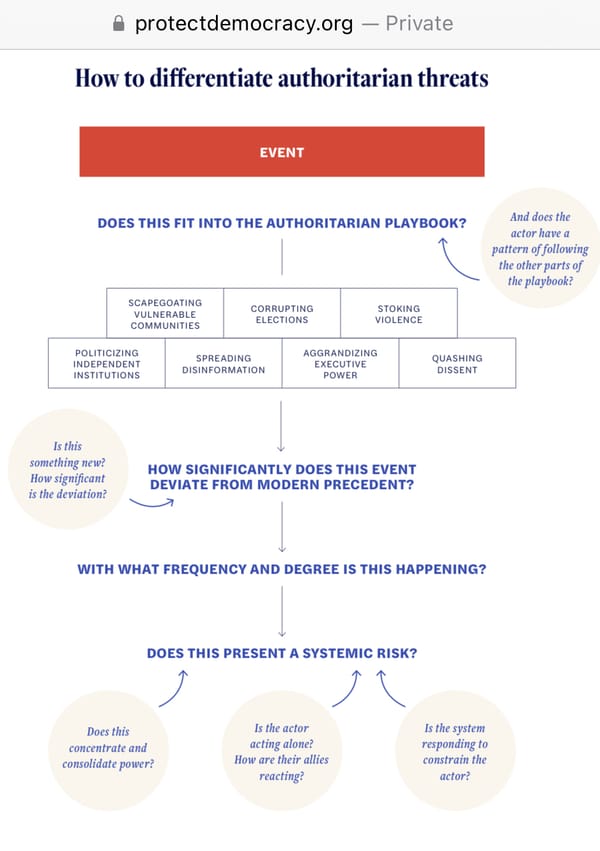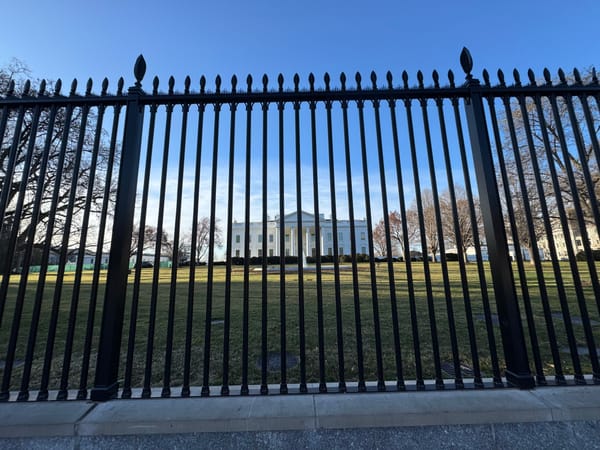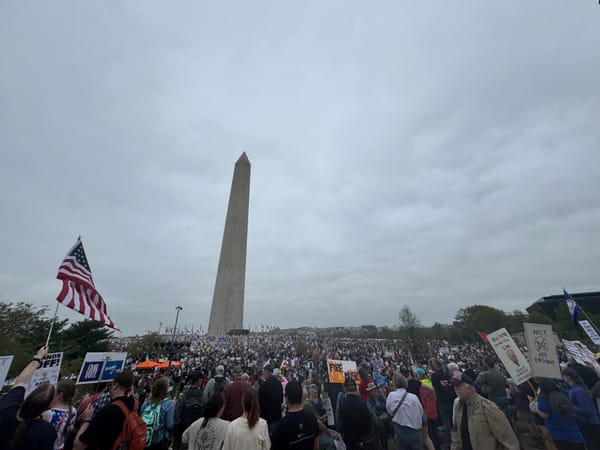Insights from my Q&A with the Justice Department about the Freedom of Information Act
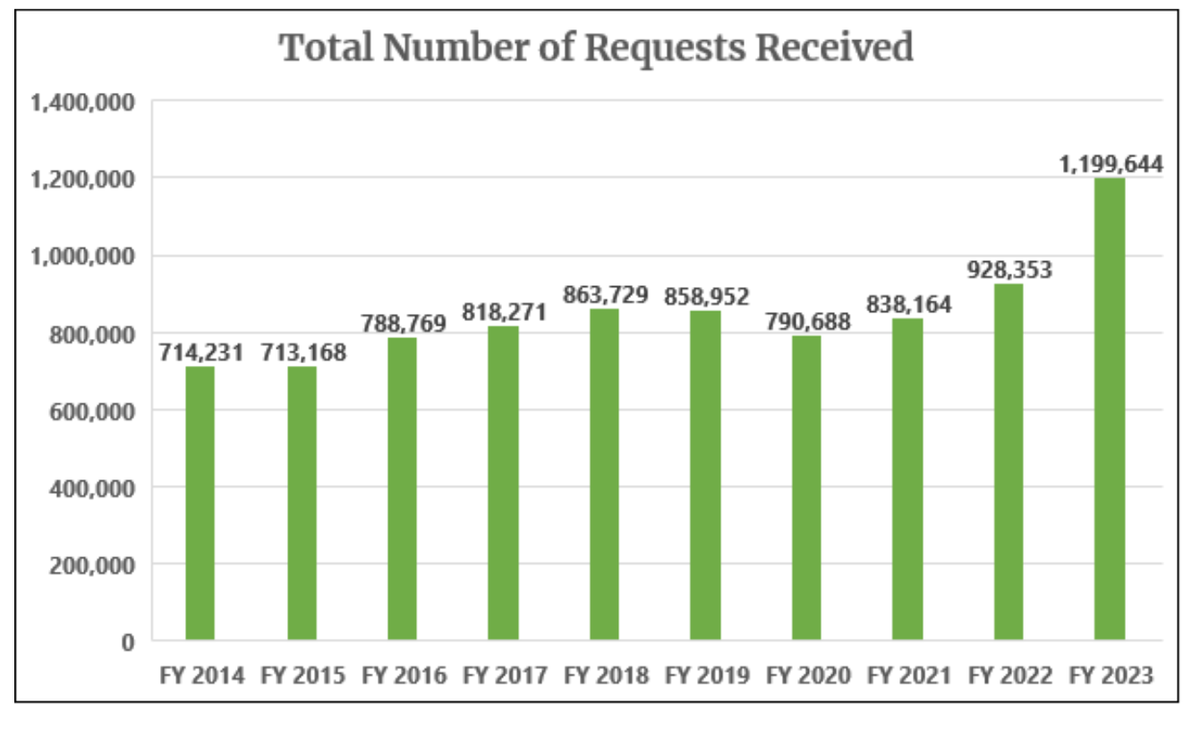
Last Tuesday, I took my daughter to Congress so she could have a bit more context into my work. We watched Representative Mike Quigley (D-IL) and Representative Tim Walberg (R-MI) introduced a Congressional Transparency Caucus forum where officials and advocates discusses the U.S.'s commitment to the Open Government Partnership.
The event featured remarks from Transparency Caucus co-chairs Reps. Mike Quigley and Tim Walberg, followed by Nate Jones of the Washington Post moderating a discussion with Patrice McDermott, Christian Hoehner, and Daniel York. Video is on YouTube, if you’re interested.
As folks who were already subscribers last week know, I wrote about the panel and the context around it before the forum, asking whether overdue Congressional interest will change U.S. participation in open government.
If you watch all the way to the end, you’ll hear me make a public comment ask whether OGP is doomed to fail in the USA without White House involvement and Congress getting directly involved is pertinent to the future of open government and democracy.
The director of the Open Government Secretariat at the General Services Administration, Daniel York, fielded my hardball and expressed optimism. I’m not optimistic that consigning a multi-stakeholder initiative that relies on public awareness for accountability to the opacity of obscurity will deliver better results than in past years.
I’ll be making a similar intervention this afternoon at the OpenGovHub, where the Secretariat is hosting a public meeting on data transparency with the Data Foundation. The meeting should be recorded and, perhaps, live-streamed. (I’ll text details at CivicTexts when I have them.)
Right now, however, I want to share a readout of another public conversation on open government I participated in at the (virtual) public meeting the U.S. Chief Freedom of Information Act Officer (FOIA) Council. (I’ve been busy this month!)
For those unfamiliar, the FOIA Council was created by Congress in the FOIA Improvement Act of 2016, which I worked on, advocated for, and celebrated when I was at the Sunlight Foundation. The Council is co-chaired by the Director of the Office of Government Information Services (OGIS) at the U.S. National Archives and Records Administration (NARA), Alina M. Semo, and the Director of the Office of Information Policy (OIP) at the Justice Department, Bobak Talebian.
The mission of this Council to develop recommendations to improve compliance with the FOIA, increase efficiency, share information about the experiences of federal agencies, best practices, identify and coordinate transparency initiatives, and promote the development of performance measures. (While the mission is complementary to the work of the U.S. Freedom of Information Act Advisory Committee – which I current sit on – the FOIA Council is only U.S. officials and civil servants.)
Good stuff, right?
Unfortunately, the FOIA Council only holds a public meeting once or twice annually. It also doesn’t always proactively disclose reports from its working groups from its Technology Committee and Committee on Cross-Agency Collaboration and Innovation (COCACI).
On the positive side, the FOIA Council has gotten much better about posting archived video, agendas, slides, reports, and even transcripts – for folks willing to burrow into FOIA.gov to find them.
While I held out vague hopes that a member of the press would attend and report on the meeting, they have been dashed, which is one reason that I’ve circled back today.
If you watch the April 17, 2024 meeting on YouTube, you’ll hear a presentation from Daniel York about the GSA’s Open Government Secretariat, its ongoing activities, and plans for 6th National Action Plan, then presentations from OIP, OGIS, and the chairs of the subcommittees. (If you read the slides, you can get a quick summary.)
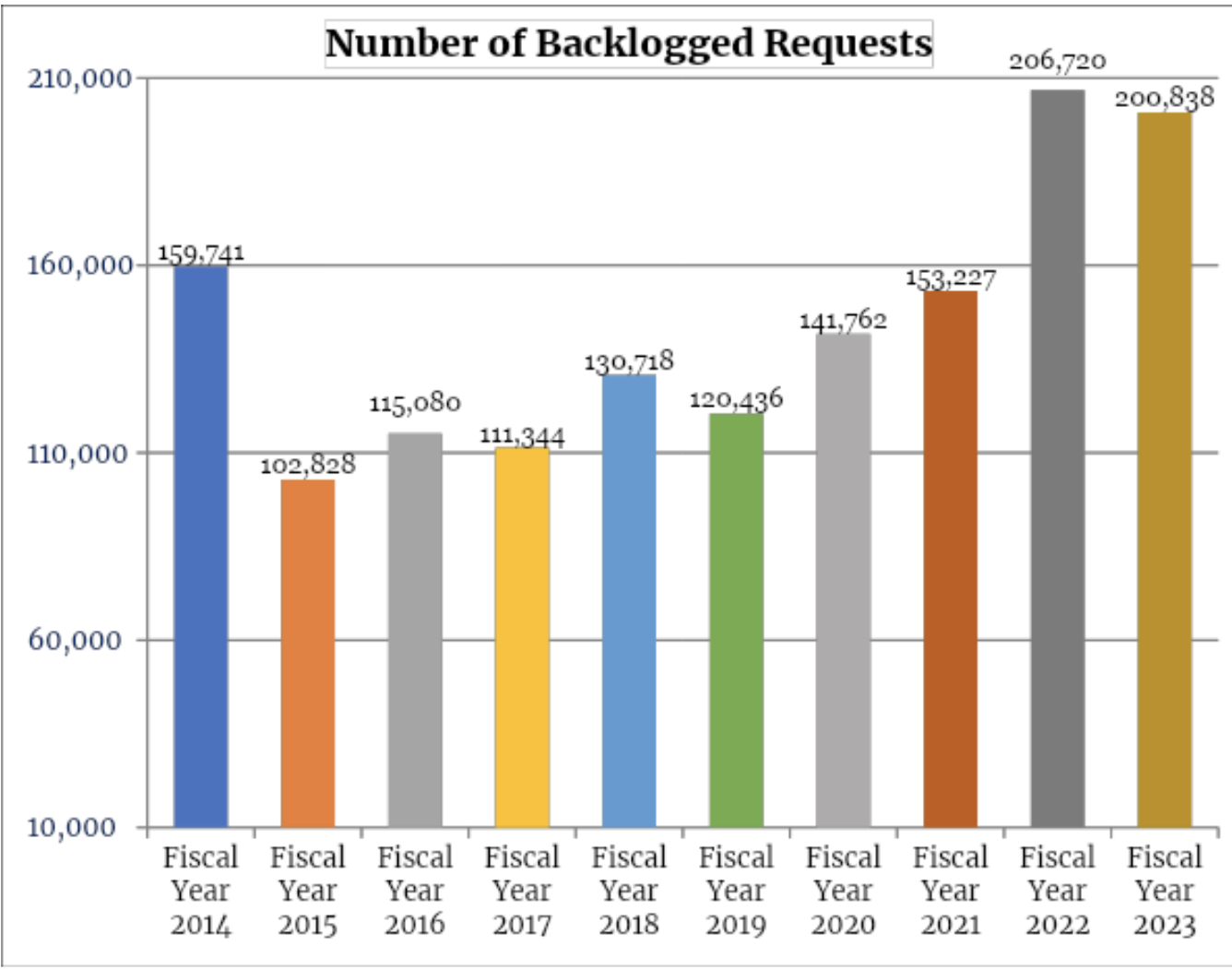
The bit I want to focus on today, however, is not OIP celebrating a slight improvement in the backlog of FOIA requests – potentially because of a ride in partial disclosures! – but the public comment period at the end.
That’s because unlike past public meetings, I came prepared with written questions that I entered into the record of the WebEx broadcast. I’m sharing my questions and rough summaries of the answers I received, below, in an order that may make more sense that the one in which they were posed. (You can skip ahead to 67 minutes, if you want listen to 3 minutes of my oral comments or the full answers. (Fair warning: the responses aren’t always satisfying.) When there’s a transcript available, I’ll circle back and post the full answers in the online version of this newsletter.
I didn’t expect to have the opportunity for an extended Q&A with the Justice Department and federal FOIA ombudsman, but life sometimes brings you delicious lemons. I hope it’s useful!
Q: Will the FOIA ombuds office join Threads or Mastodon & begin cross-posting what you publish on X to the fediverse, so that Americans do not have to use the platform formerly known as Twitter to access the information shared there?
A: When NARA says it’s OK. (Me: NARA is using Instagram, so there’s already an agreement in place!)
Q: The lessons-learned from the pandemic and going virtual will be important for decades to come. The National Archives found that getting staff laptops with secure Internet connections enabled them to get back to work on the core mission of delivering access to veterans. Do all FOIA officers have similar capabilities now for full remote work? If not, are there plans to invest in that capacity?
A from Talebian: A lot of agencies adjusted. Some are more telework-ready than others. Different agencies have different challenges on remote and telework, particularly when it comes to classified work.
Q: The Office of Information Policy did not co-create the FOIA commitments for the 5th U.S. National Action Plan for Open Government with civil society in 2022. Will OIP add new commitments to a NAP 5.5 to implement in 2025, while a new plan is co-created?
For instance, would OIP commit to issuing guidance recommending a release-to-one, release-to-all FOIA policy to agencies, modeled on the successful approach adopted by the State Department? This would represent a shared goal between civil society and government.
A from Talebian: We are open to additional commitments. We are looking forward to working with York on co-creation of the next national action plan & other initiatives we take on at the Department of Justice. We will consider things like proactive disclosure policies.
Q: Would OIP consider opening a request for information about a “release to one, release to all policy” for both government and non-government stakeholders, either as a NAP 5.5 commitment to implement in 2024-2025, or as a flagship commitment in a 2024-2027 Department of Justice Open Government Plan? Other agencies plan to co-create agency open government plans – independent of the national one that Daniel referred to today. Will the Department of Justice engage its stakeholders to do this in roundtables and workshops over the next year, as part of public engagement and ongoing recommitment to open government?
A from Talebian: We look forward to co-creation & continued discussion. Will consider everything.
Q: Congress mandated that public records should be disclosed as open government data – in open formats are machine-readable – but the Office of Management and Budget has not issued the required guidance on open data. It appears OIP is considering issuing guidance to mandate that agencies disclose logs as open data. Are you speaking with OMB to coordinate and reinforce the message that proactive disclosures must be open data, not closed, proprietary documents? If not, why not?
A from Talebian: We will continue to work with and collaborate with OMB. They are very supportive of FOIA.gov and the wizard. We appreciate the partnership.
Q: Have any agencies proactively disclosed the records that had been hosted on FOIAOnline on their FOIA reading rooms or Data.gov, as structured data? If so, which ones? If not, how and where can the public access the files that were on FOIAOnline.gov?
A from Talebian: I don’t have that information. It’s specific to each agency. We did send a memo reminding them of their obligations of posting records in libraries. I don’t have insight.
Q: When will the COCACI subcommittee post more reports and information about their work, like minutes or agendas from meetings, or reports? There are just charters online. I hope every working group in the Technology Committee proactively discloses a report and findings so that everyone around the country (and world) can learn from their work.
A from Stein: We will put more updates on FOIA.gov
Q: The FOIA Improvement Act created this council. It also mandated the The “Rule of 3” for Frequently Requested Records: Agencies are now required to “make available for public inspection in an electronic format,” records “that have been requested 3 or more times.” (This aligns with a release-to-one, release-to-all policy.) Does OIP track which records have been requested 3+ times? Does FOIA.gov do so? Does OIP require agencies to track which records have passed this redline?
A: This refers to records disclosed and released 3 times. These are captured in annual FOIA report. We do ask agencies in their report to report on the ways they track.
Q for Eric Stein. It was great to see you during Sunshine Week! Has the adoption of a release to one, release to all policy for proactive disclosing records requested under FOIA online resulted in cost savings for the State Department, as a result of publishing records in high or consistent demand? Any idea how much? Has it resulted in improved response times or other process improvements?
A from Stein: I don’t have a figure for savings. The savings from cost avoidance come to mind. We could not spend time doing an analysis. We focus on posting documents online. We have incorporated and looked at how we can point requestors to info already released. More content on virtual reading room enabled experiments, like AI pilots.
Q for Eric Stein: Have you or the technology committee created and shared best-practices for adoption of "release-to-one, release-to-all" for other agencies?
A: No, but have discussed it. Every agency is structured differently. Some have IT or tech in the FOIA office. Others have to partner on FOIA and tech. Some don’t have the means to do posting. The solution is going to vary by agency. We have shared best practices among working group, but not documented them. We are going to look at what could be done in this space.
Q: Why aren't these FOIA vendor "showcases" open to the public and press? Is it not in the public interest to make the procurement of technology for the FOIA more transparent than any other such process in federal government? Who does it serve to keep them government & vendor-only?
A from Stein: Good point. First time, was such a success. More interest this time. Process for RFIs that agencies follow for hosting event. We posted not just responses from vendors but the videos from vendors. What they were sharing, presenting, what agencies saw. Purpose is to raise awareness of abilities of vendors. Challenge in pandemic, with trade shows. They require space. With physical event, we could have included the public We do receive feedback. We don’t receive a lot of feedback. I encourage sharing them, so we can discuss. We will be posting video. Worth watching. Agencies looking for case management; found themselves without tools available. Great opportunity.
That was a lot, right? If you’ve made it to the end of the Q&A, I salute you for being a fellow FOIA nerd!
If so, I recommend that you tune in to the next public meeting of the FOIA Advisory Council on May 9th, because we’ll have more to share on the past, present, and future of freedom of information in the USA.) As always,
if you have questions, comments, suggestions, or other feedback, feel free to write me at alex@governing.digital, find me @digiphile on social media, or DM & email for Signal.
If you find these newsletters valuable, please consider sharing them with friends, family, and colleagues in your networks and upgrading to a paid subscription to support my work. Thank you!

